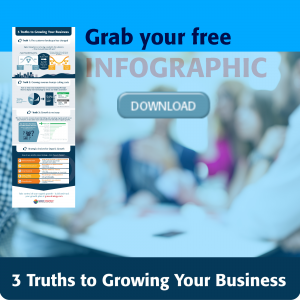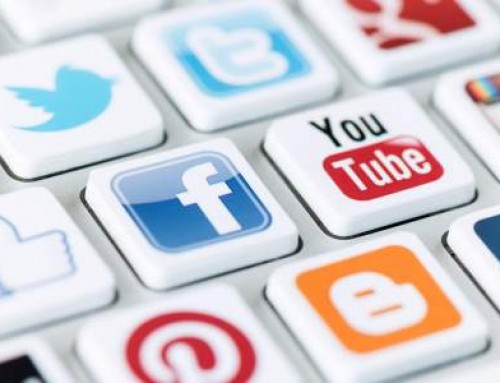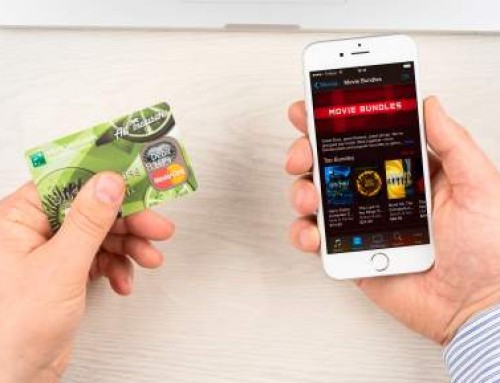Australians are among the most addicted smartphone users on the planet. And it’s not just teenagers or digital natives either.
We check our mobile devices up to 110 times a day.
Addicted to smartphones
This addiction to mobile and the transition to mobile first impacts everything we do. At home and at work.
Which is why I find it increasingly curious that many owners and managers of small businesses still fail to accommodate this shift to mobile – and social for that matter – in their growth planning and in terms of how they engage with and respond to their customers.
Marketing doesn’t work like it used to
 As a case in point, I was recently interviewing a business owner who runs a café and catering business in Sydney’s CBD. Luke has been in the industry for years and running this particular business for the last five. He was telling me that the last three years have been increasingly difficult as long standing corporate clients have moved out of the CBD, and he’s failed to engage the businesses that have replaced them.
As a case in point, I was recently interviewing a business owner who runs a café and catering business in Sydney’s CBD. Luke has been in the industry for years and running this particular business for the last five. He was telling me that the last three years have been increasingly difficult as long standing corporate clients have moved out of the CBD, and he’s failed to engage the businesses that have replaced them.
So I asked Luke about his growth plans. What he was doing to attract new customers and whether he was using online, mobile or social. Luke explained that as his customers were all businesses within the immediate area, he didn’t need to invest in digital marketing.
But here’s the thing. He does.
It doesn’t matter how successful your offline marketing has been in the past, we’re now living in a digital world. Digital disruption is breaking down barriers to entry for companies in existing markets but also into new ones as well. (See our recent post on how to compete in the Digital Age).

Engage not sell: Facebook Marketing for Cafe Owners
How to deal with digital disruption?
Small businesses are falling behind
According to a new Deloitte Access Economics report SMBs in the digital race for the customer, most small and medium sized businesses are falling behind. In analysing the responses of over 500 small business leaders in Australia and New Zealand, the report reveals that as many as 80% of these businesses are like Luke and not taking advantage of digital, mobile or social to actively engage with customers.
On the flip side, those businesses that have invested in a digital strategy are reaping the rewards. The report suggests that:
small and medium businesses that communicate with their customers over multiple channels enjoy revenue growth close to 5% higher, or nearly $160,000 more a year on average.
Social media is a business tool
As the report highlights, around half of all Australians access social networking sites on a weekly basis.
Around 24% say they use social media to find information about a particular business, and 20% say they would use it to research products and services.
This number is only going to increase as the workforce swells with greater number of digital first Millennials.
But when you think about how we all use our mobile devices (up to 110 times a day), and how we all Google everything, it’s not just digital natives who choose online first.
Owning a new point of difference
Luke’s cafe business is in trouble because businesses now order corporate catering services online. In the same way we all check out customer reviews before we book a table at a restaurant, business customers also turn online first to check out video testimonials and menus, before ordering online.
 While Luke’s biggest selling point was his commercial kitchen with quick delivery in the CBD, for most corporate clients this is irrelevant. They don’t care whether the food is prepared 5 minutes away or 50 minutes away – as long as the delivery time is guaranteed.
While Luke’s biggest selling point was his commercial kitchen with quick delivery in the CBD, for most corporate clients this is irrelevant. They don’t care whether the food is prepared 5 minutes away or 50 minutes away – as long as the delivery time is guaranteed.
The corporate events person making the purchase decision is now likely to be a mobile-savvy Millennial.
With this shift, it’s more important than ever to understand your customers and recalibrate your messaging, and ensure you’re using the right channels. As a start:
- Segment your market to develop a deeper understanding of your customers and what makes them tick
- Understand your competitive advantage
- Figure out how to take advantage of digital disruption, and
- Embrace Digital channels (eg; Facebook) to deliver a superior customer experience with a customised, personal service for birthday and other milestone reminders.
Remember, as Millennials make up a larger part of the workforce, these highly connected individuals are also potentially your highly connected prospects.
What’s in the future? Customers are increasingly happy to trade personal details in return for customised offerings. Within the cafe environment, this will easily translate into personalised real-time menus based on their specific tastes. To capture this market, you will first need to move from intrusive marketing to permission-based marketing.
Unless you take advantage of digital channels and promote yourself online, on social and on mobile, you’ll be pretty much invisible.






